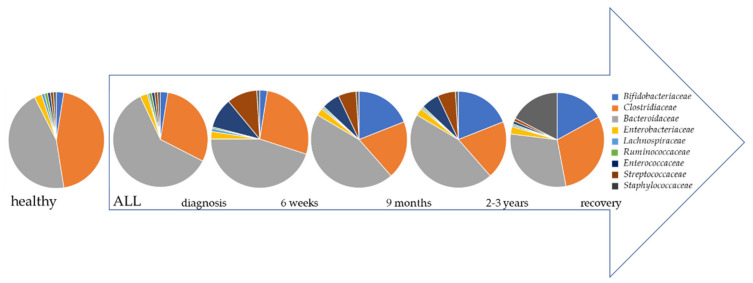Figure 2.
Microbial composition shifts during therapy phases. At timepoint of diagnosis composition already differs from ALL patients compared to healthy children. Clostridiaceae and Bacteroidaceae are predominant species in healthy children [31,48]. At time of diagnosis Bacteroidaceae abundance prevails in ALL patients while Clostridiaceae and Lachnospiraceae decrease [31]. During the first 6 weeks of therapy namely induction phase, Ruminococcacea decrease, unlike Streptococcaceae and Enterococcaceae, whose abundances increase [35,36,38]. While bacterial load decreases in general within consolidation (9 months) and maintenance phase (2–3 years) the abundance of Lachnospiraceae and Clostridiceae decreases drastically, whereas spectrum of Bifidobacteriaceae, Streptococcacea, and Enterococcaceae emerged [35]. At the end of therapy microbial composition significantly differs from healthy children. ALL children still show an increase of Bifidobacteriaceae and Staphylococcaceae, and a decrease of Clostridiaceae and Bacteroidaceae [41]. This figure is a schematic representation and displays trends, not exact numbers.

